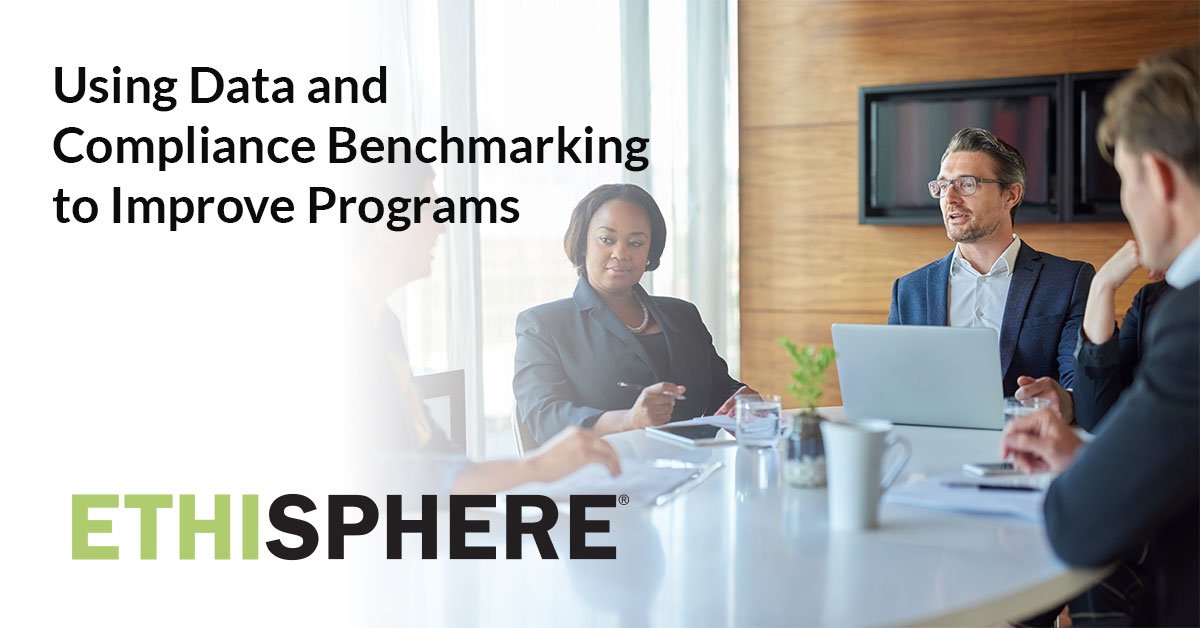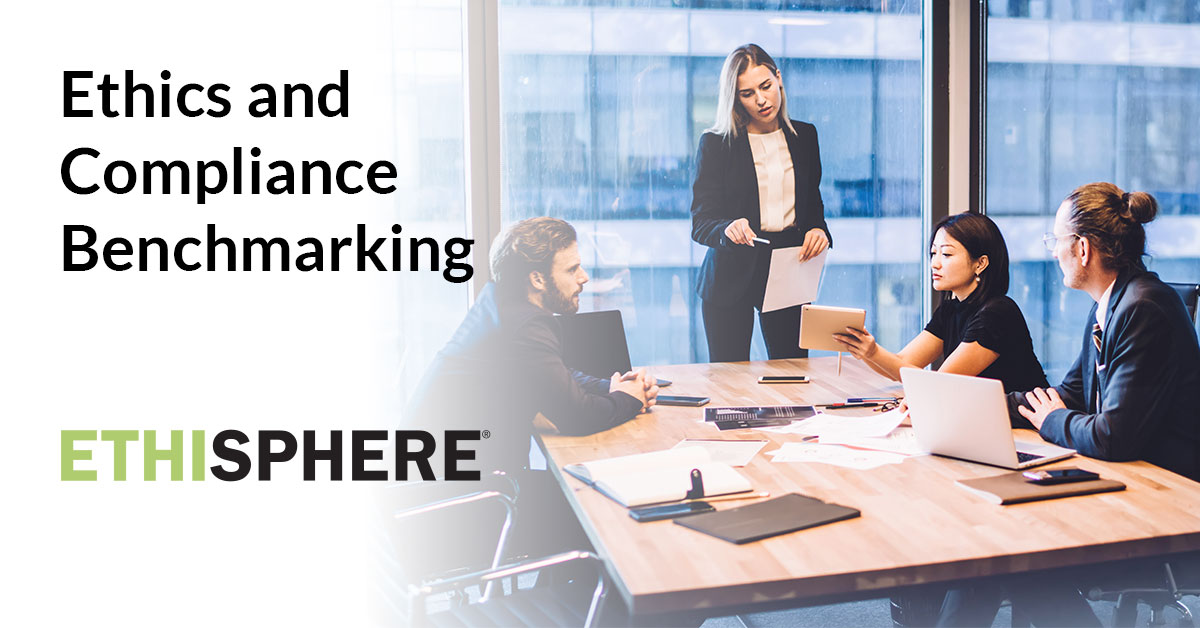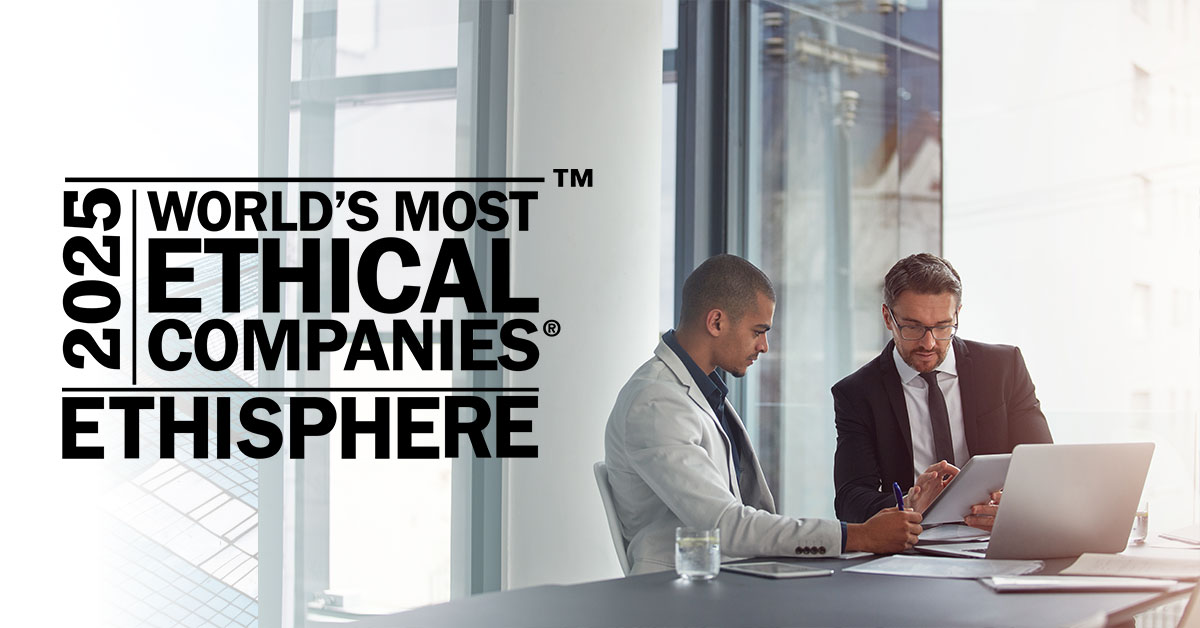Tyler Lawrence discusses best practices for the World’s Most Ethical Companies® application process.
Interview by Bill Coffin – featured in Ethisphere Magazine: Insider’s Guide
Applying to the World’s Most Ethical Companies is an in-depth self-assessment that provides valuable insights on your ethics and compliance program. In this article, learn the steps of the process and how to take your application from good to great.
Why is going through the application process such a worthwhile experience for applicants?
The Ethics Quotient® (EQ) is the backbone of the World’s Most Ethical Companies application. It is the same, in-depth questionnaire that Ethisphere uses for our program assessment and benchmarking work.
Ethisphere updates the EQ every year based on the general evolution in the ethics and compliance space, along with trends in regulations, governance, third parties and supply chain management, and ESG. Completing the World’s Most Ethical Companies application gives companies a chance to measure themselves against the latest best practices.
Throughout the application process, you’ll expand opportunities to collaborate with allied functions across the enterprise.
To support your application, you will be asked to provide documentation—such as examples of ethics training and investigation programs, sample communications and written policies, etc.—to get a holistic sense of your program maturity and the impact of your ethics and compliance team within the organization.
We measure those EQ answers and their corresponding documentation against best practices demanded by regulators such as the U.S. Department of Justice. We want to make sure that the ethics and compliance team, and its work, is embedded within other partner and control functions across the organization.
The beauty of the application process, especially for companies that come back repeatedly every year, is it provides a nimble barometer on how their program measures up against the EQ. Applicants receive a scorecard and benchmarking on a curated selection of specific questions that represent noteworthy trends from the EQ. The application process provides an annual opportunity to renew relationships with allied functions to ensure that they are just as involved with, and engaged in, the work of ethics and compliance as the core team is.
What does the application process look like, step by step?
Every year, we announce the opening of the World’s Most Ethical Companies application window and make available a form for interested parties to fill out and declare their interest in applying.
GETTING STARTED: The Application Portal
Organizations that fill out that form gain access to the application portal, where they can review the EQ as well as document submission requirements. This gives a good sense of the scope of the application process.
We recommend that all applicants pay close attention to the various aids, guides, and communications Ethisphere will release to give applicants a clear understanding of what changes were made to the process from the previous year, and why.
This year Ethisphere will release a series of videos that explain what we are looking for in each section of the EQ and what a strong submission looks like. We will also host several webinars that share details of the application process, what the platform looks like, and how you can collaborate with partners within your organization. I encourage applicants to attend those webinars.
Many applicants designate one person to captain the entire process. The day the application window opens, that person typically downloads the full EQ and assigns questions to people across the organization who would have the particular data needed to answer a certain section of the EQ. The sooner you begin that outreach, the better. For some organizations, the application team may include a dozen people or more. However, most questions can be answers by the ethics and compliance team on their own.
While the EQ is extensive, don’t let it discourage you from applying. Organizations of many different sizes and types receive World’s Most Ethical Companies recognition. Your application will be compared to your industry peers, and our evaluations team knows what kinds of allowances to make for certain differences of expectations, or law, which exist around the world.
Even if applying to the World’s Most Ethical Companies feels like a long shot, engaging in the process provides a valuable benchmarking baseline. And the documentation feedback can be used to make the case internally for the investments or improvements needed to create a truly best-in-class program that exceeds public and regulator expectations.
The application window is open for about three months, and companies typically use that time to gather documentation, provide summaries or narratives (particularly around document requests where an applicant may have redacted information). We encourage companies to include summary documentation to provide narrative context to your application.
In the application portal, applicants finalize their answers to the EQ section by section. Multiple users for a single application can access the portal, so applicants can finalize multiple sections simultaneously; this is not something that one person has to do on their own.
Once applicants have submitted their questionnaires and documentation, and the application window has closed, our team reviews all submitted materials and diligently evaluate the total body of applications. This process takes several months. Occasionally, Ethisphere may contact an applicant if there is a technical issue on some piece of their application. Applicants should not expect Ethisphere to entertain follow-up calls so applicants can provide further materials. If an applicant cannot submit something in their documentation, then they should provide a narrative to explain why and how it impacts their overall E&C program.
Notifying the Honorees & The Scorecard Experience
In January, Ethisphere contacts applicants to notify them if they have received World’s Most Ethical Companies recognition. Shortly afterwards, applicants receive a scorecard with a topic level score out of 100 on how high they scored in any given category or sub-category from the EQ, as well as what the World’s Most Ethical Companies average was for that category. It is important for applicants to remember that because the EQ changes annually, their scorecard is not meant for year-over-year comparison.
In addition to their scorecard, applicants receive benchmarking data on 20 specific data points from across the EQ that correlate to noteworthy trends that presented across the entire applicant group. We also provide companies with scores on the strength of their various document submissions. All of that information is contained within The Sphere, Ethisphere’s analysis and benchmarking platform. Applicants gain access to that on the same day that Ethisphere officially announces the new honorees.
After all honoree companies have been notified, there is usually a 4- to 6-week period until Ethisphere officially announces the new World’s Most Ethical Companies Honoree class. Honoree companies will use that time to prepare internal and external communications, congratulations messages, press releases, videos, etc. This is an exciting time, as many honoree companies create innovative ways to share the news with their stakeholders.
Leveraging Insights for Continual Improvement
By the time of the public announcement, applicants typically have already begun analyzing their scorecard results, documents scores, and benchmarking in The Sphere to develop action plans for addressing their opportunities for improvement. Many organizations will turn that into their continuous improvement plan for the year, spotlighting the different action items they can implement before the next year’s application window opens again.
What does it look like when applicants make the best use of the tools and resources provided to them to maximize their application experience?
Organizations that do not receive World’s Most Ethical Companies recognition often use their benchmarking data in The Sphere, their scorecards, their feedback, and the EQ itself, to drive their continuous improvement plans.
Companies that apply year over year allows them to gauge how far they are progressing on their improvement journey. An ethics and compliance team should be prepared to receive the results about their program, and they can use those results to make the case for the buy-in, the resources, and the collaboration needed to take their program to the next level.
What are some aspects of a strong application that you wish were better known?
Do not underestimate the importance of narrative, especially if there is a gap in your documentation. A brief narrative for each section to provide a sense of what is there—in addition to the documents themselves—is helpful. In areas where there an applicant cannot submit requested documentation, a narrative as to why is better than nothing. Although, narratives alone are not a general substitution for documentation.
Sometimes applicants will encounter a question that they cannot answer. When that happens, don’t send a huge amount of un-related documentation. Just present what you do have. Our reviewers are very qualified and experienced, and if the honest answer to a question involves something that is still under development, that’s fine. The review team will appreciate an applicant that is honest about where their program is rather than submitting unrelated documentation.






